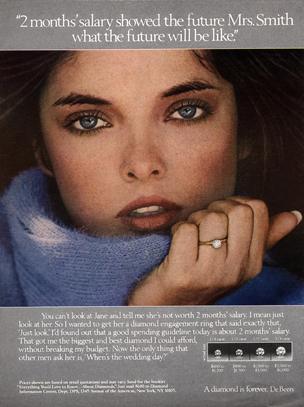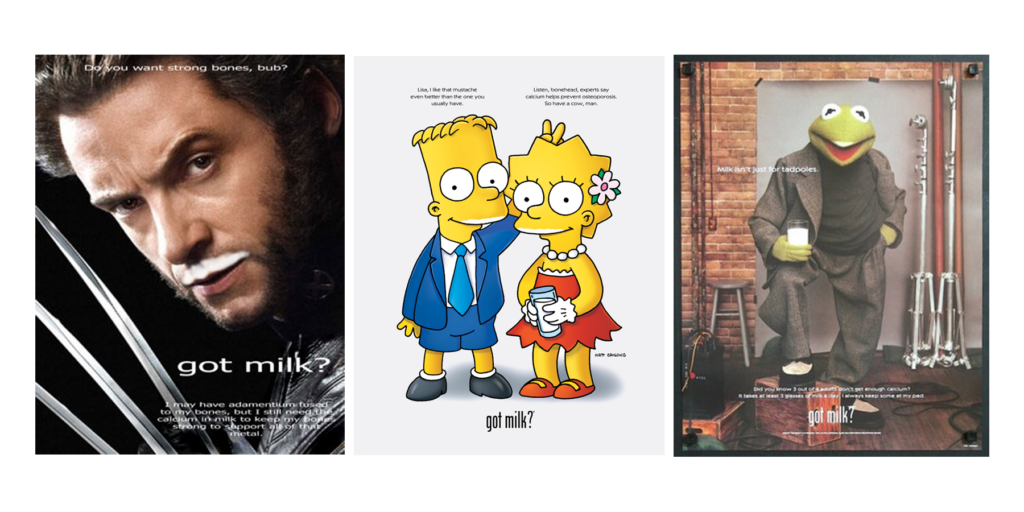What makes an ad great? Even better, what makes an ad stand the test of time?
Is it a tagline? The celebrity cameos? The clean design for your eyes or jingle ringing throughout the ears? Maybe, it’s all the above or purely lightning striking in the bottle? Maybe, we’re asking too many questions…
In our new series of blogs, we want to break down why these ads are now considered hero campaigns – ads that make the biggest splash and engage (almost) all audiences.
The marketing world is exciting because we’re always learning something new, even from the already-analysed oldies and goldies.
Today, we’re going to illustrate why these campaigns are still respected for their unique marketing approaches, highlighting how we can use these techniques in the new era of advertising we’re heading into.
Get ready to take notes on the GOATS!
Diamonds
When we think of the phrase “diamonds are forever”, you’ll likely think of Shirley Bassey singing the Connery-classic James Bond theme. However, these three words can be associated with one of the greatest slogans ever written for a marketing campaign.
Since 1948, De Beers has used “A diamond is forever” to entice audiences with the rarity and sentimental value an engagement ring has for consumers.
When we picture love, we like to think it’s eternal – and there’s no better way to set that in stone (literally) than with a product that lasts forever.
So how was De Beers inspired to create such a catchy tagline? Through extensive audience research, of course. And your marketing approach shouldn’t be any different.
Throughout the late 1930s, research found that many consumers believed diamonds were too expensive, something not worth their hard-earned cash. And so, a campaign was set in place to market diamonds as an essential need for those getting married.
According to the New York Times, the campaign planned to “create a situation where almost every person pledging marriage feels compelled to acquire a diamond engagement ring.”
Though you can argue this persuasive tactic is slightly unethical, you can’t deny the success. Between 1938 and 1941, there was a 55% increase in U.S. diamond sales.
The campaign also shaped itself and catered to the economic changes throughout the decades.
In the 80s, the tagline, “2 months’ salary”, became part of the campaign, emphasising the importance of saving, then spending your money on an engagement ring that stands the test of time.

The Key Takeaways
Though we’d never promote manipulating the market, De Beers has shown how marketing can create value for even the tiniest products.
The art of persuasion is a delicate line to walk. Placing value on your product is essential; it highlights why it’s better than the rest. But you also need to make sure you’re not overselling or tricking consumers into thinking it’s absolutely essential.
Value proposition is key. What value are you offering your audience with your product, or what problem do you solve?
The tactics used in this campaign also emphasise how effective audience research can be. The more you understand a consumer’s needs, the more you can cater to them through your marketing.
Got Milk?
On a less sour note (see what I did there?), the other direction in audience engagement is to appreciate the one you already have. Retention is almost more important than acquisition, remember.
In 1993, one particular agency was preparing a pitch for a new client, the California Milk Processor Board, which had tasked them with boosting product sales.
A study before the pitch asked participants to go one week without milk – no Nesquik, no cereal, nothing. The absence of this household essential created an interesting (albeit strange) conversation; can we go without milk?
What followed was an advertising campaign that took the country by pop-cultural storm. “Got Milk?”

From The Simpsons to Wolverine, you couldn’t go a day without seeing the slogan. An estimated 80% of all U.S. consumers came into contact with the campaign.
The moral of the story? Simplicity sells. Sometimes all you need is a question, and the rest is history. Sure, you can argue that a product like milk is easier to sell than a diamond, but the uncomplicated way the ad presented itself was a stroke of genius.
From print to OOH campaigns, “Got Milk” was so simple you could place it anywhere and everywhere.
In one year, milk sales rose 7% in California alone, and the brand is still milking (sorry) the campaign to this day.
Key Takeaways
The “Got Milk?” campaign came out when active-audience participation was in infancy. Imagine the possibilities now with social media and digital technologies! If you need help in this department, we’re experts, so get in touch.
Keeping your campaign simple can attract a massive reach in audience numbers. Native content (especially on sites such as TikTok) can be a great example of how a simple question can lead to creative, viral content.
The campaign also shows how important it is to keep consumers already using your product happy and in the loop. The campaign didn’t engage people who weren’t drinking milk; it reminded milk-lovers that they needed a new bottle in the fridge.
Old Spice
So, we’ve looked at some campaigns from the past, but how have more recent(ish) campaigns used the digital world to create forever-lasting ads?
In 2010, Old Spice released a TV commercial with Isaiah Amir Mustafa. The ad has been seen over 60 million times on Youtube – whether that’s because of the ad’s quality or because Mustafa is a walking God is still up for discussion.
However, Old Spice took the commercial’s engagement and expanded upon it. Capitalising on the pop-cultural awareness of the “Old Spice Guy”, the campaign took on a new life via social media platforms.
Across Facebook, Twitter, and other social media platforms, Mustafa took on the spicey (sorry, again) persona, replying to fans with personal videos, even chatting to Starbucks about keeping toasty.
In total, the personalised videos reached 11 million views, with the brand gaining 29,000 fans on Facebook and 58,000 new followers on Twitter.
The Key Takeaways
Do everything to keep your audience engaged. A campaign can evolve into whatever you want it to be, and with social media bigger than ever, the options for creative marketing have only increased.
Think about how you can use the star of your ads to engage and communicate with your audience directly.
Celebrity marketing has morphed into influencer collaboration. Sites such as Cameo have found success through personalised celebrity videos – how can you, as a marketer, branch out, partner with celebrities and grab attention through the platform?
Research into who your audience engages with on social media – who are they following, buying products from and engaging with?
We have a whole study on whether influencer marketing can be the right move for your brand, which you can read here.
See you in part two!
Thought that was the end? We’ve still got plenty to discuss!
From the copy to an ad’s design – there’s still a mountain of campaigns to explore when it comes to the greats.
You never know; we might see you on a list of greats one day!
In the next blog in the series, we’re delving deeper into copy and how it can create the perfect ad. So, make sure to check in on our social posts for when the latest blog drops!
Until then, would you like to know more about audience research, its importance, and how it can improve a campaign’s conception? Get in touch with our marketing experts now.



